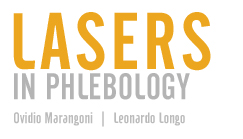AUTHOR COMMENT
ARS MEDICA IN THE NEW MILLENNIUM
The Art of Curing and criticism to extreme technological innovation
Comment by Ovidio Marangoni MD (4th September 1949 – 18th January 2007).
Medical Ethics should force Doctors to use known, safe, proven and modern tools and therapies. As a matter of fact, recent evolution in medical diagnostics and medical-surgical therapies makes it difficult for experts to be sure about the effectiveness of innovative techniques; however a critical mind, which should be typical of scholars, and Doctors in particular, beyond any academic doctrine, has to be asserted without long-awaited recognitions, bureaucratic authorizations and should keep distance from optimistic results celebrated by trade companies.
Today updating is a fast process thanks to the easily retrievable guidelines on diagnostic and therapeutic techniques in internationally well-known popular publications.
How should be considered a professional who immediately resorts to antibiotics dating back to 50 years ago, like streptomicine with its side-effects? Has its use been banned?
Non-degenerate peptic ulcer is no longer treated with B1 and B2 resections, selective or highly selective vagotomy and fancy pyloroplasty, extremely complicated operations often leading to severe consequences for the patient. Not to mention antacid therapy, which is not routinely prescribed.
Despite the initial difficulties, laparoscopic colecistectomy is a daily procedure.
In medical history, not only in recent times, excellent therapies were reported to be effective, such as long neglected chemical sclerosis of lower limb varices and demolition activities, once deemed as a radical treatment and nowadays considered - in the era of mini-invasive surgery - as a deed of barbarism.
Sclerotherapy, which has been widely practised by the French school since the 50s, was recognized and liberalized only in the late 80s in our country, with strong scepticism among doctors.
Improvisation, poor knowledge of micro-angiotectonics, pharmacokinetics and solution concentrations, were often detrimental rather than beneficial. If sclerotherapy is properly applied, its advantages, due to the new innovative foams, become evident and irreplaceable.
Many surgeons still criticize laser surgery despite the fact that over the last 4 decades it has undoubtedly been successful and improving, when used by Skilled Hands and Excellent Brains. These, in fact, can perfectly control visible or invisible light beams in successful operations, thanks to their Ars Medica and Technology, not only to hi-tech tools. However, it is also true that when the best tools end up in wrong hands or inappropriately used, they can cause great damages, bringing along medical and legal consequences.
Considering that mini-invasiveness, safety due to lack of contact with electric tools and chromophore selectivity without infiltrative anesthesia are vital requirements to us, criticizing a correctly indicated and applied technique in the light of its significant advantages may be regarded as a non-ethical deed and should be deontologically sanctioned, like any other out-of-date therapy.
The electric scalpel is a tool dating back to 50 years ago, which does not lead to the positive results achieved with a laser light. The use of monochromatic light energy should be imposed as a “gold standard” in the treatment of all those vascular, pigmented and visible malformative lesions on aesthetic and functional areas.
Laser treatments for hair removal and photocoagulation of lower limb angiectases should be reconsidered, not only due to the anatomic and instrumental difficulties which lead to fewer results and more complicances, compared to those achieved with other proven therapies, but also because their application is driven by marketing reasons rather than a real lack of adequate therapies.
Regarding the treatment of lower limb vessel ectases, a new endolaser technique is gaining ground, mainly thanks to endovenous laser treatments which employ laser light irradiation to perivenous tissues through optical fibers. This approach will undoubtedly revolutionize the treatment of varices as well as resistant and relapsing ectases.
Ovidio Marangoni MD
From reasons for teaching Laser Therapy by Ovidio Marangoni – author of the textbook “Lasers in Phlebology” and late Eufoton scientific director.
|


